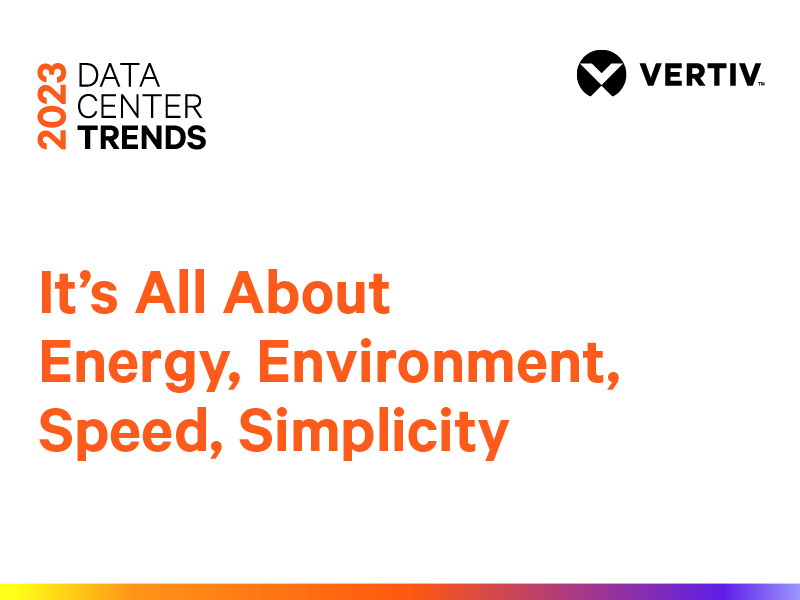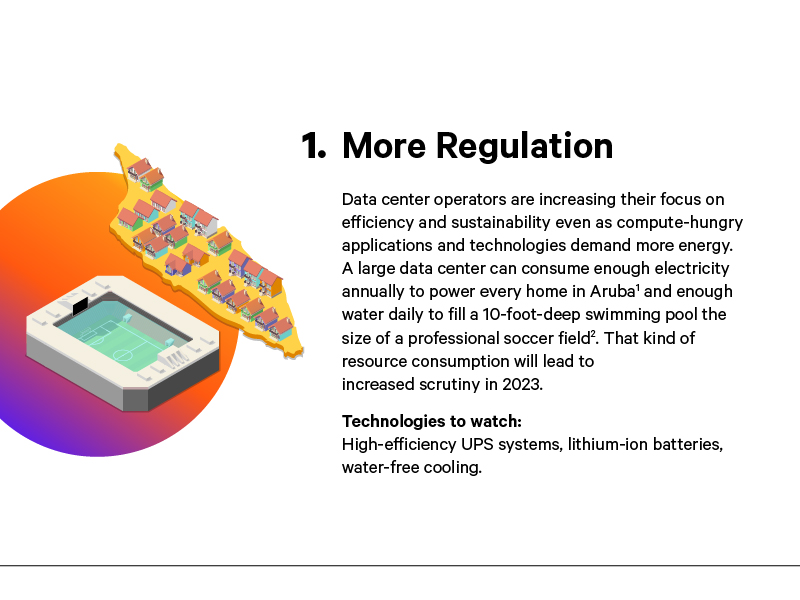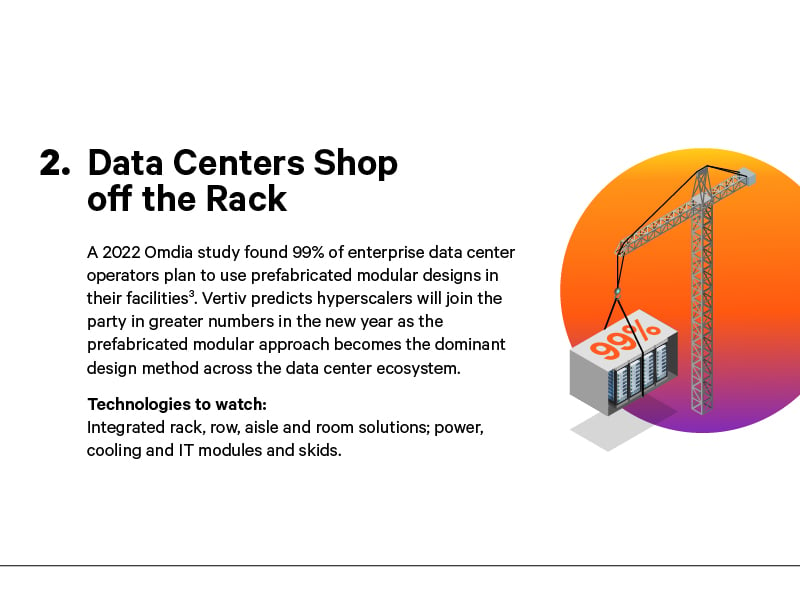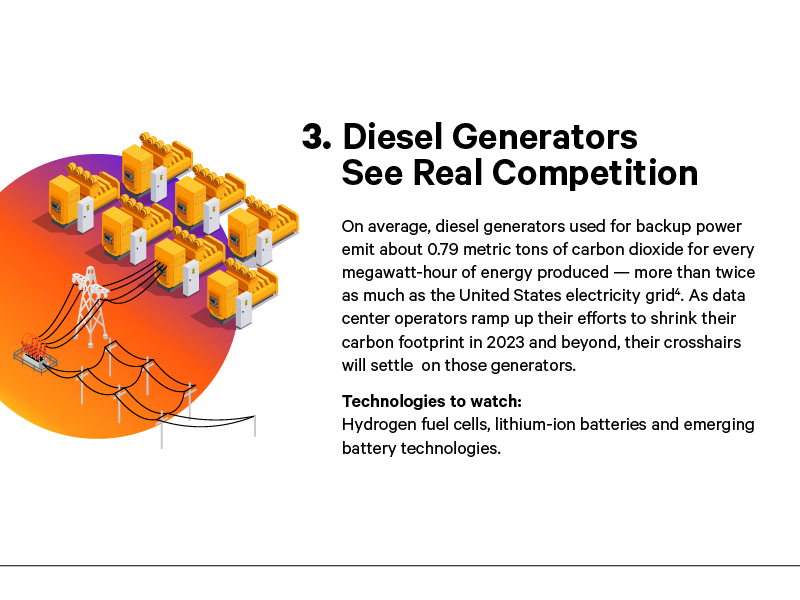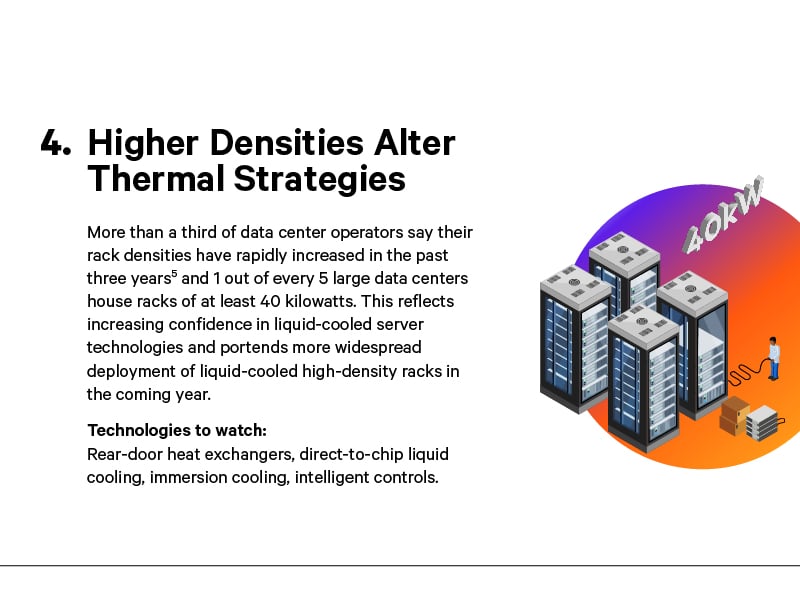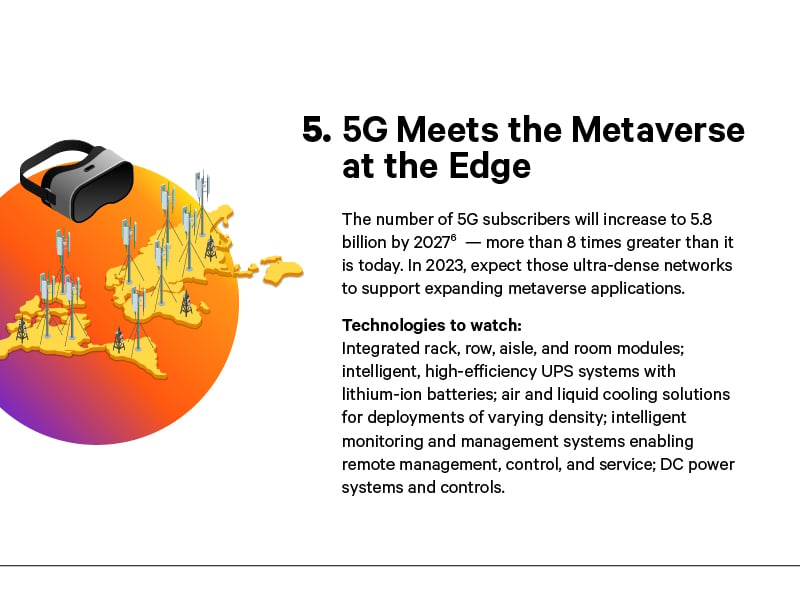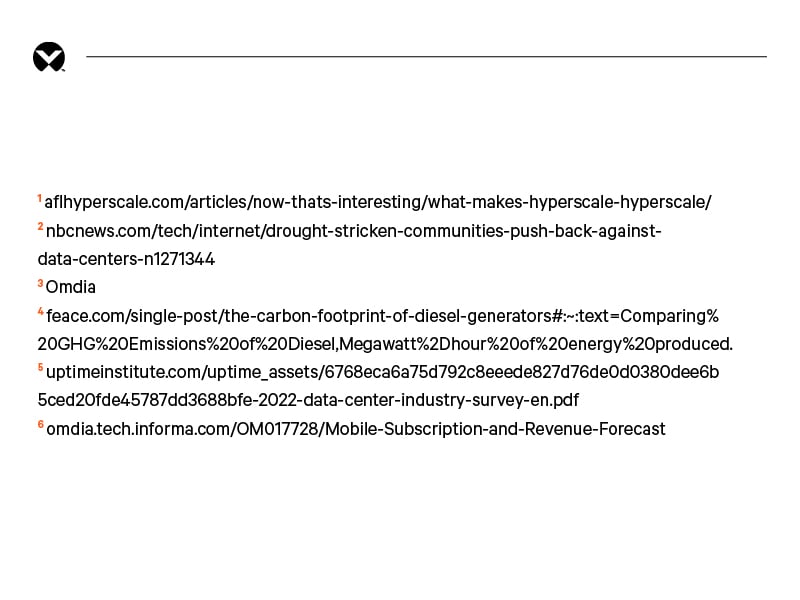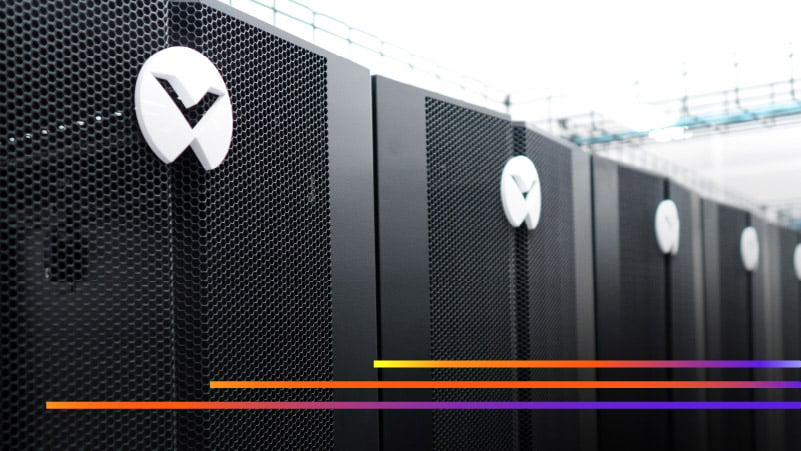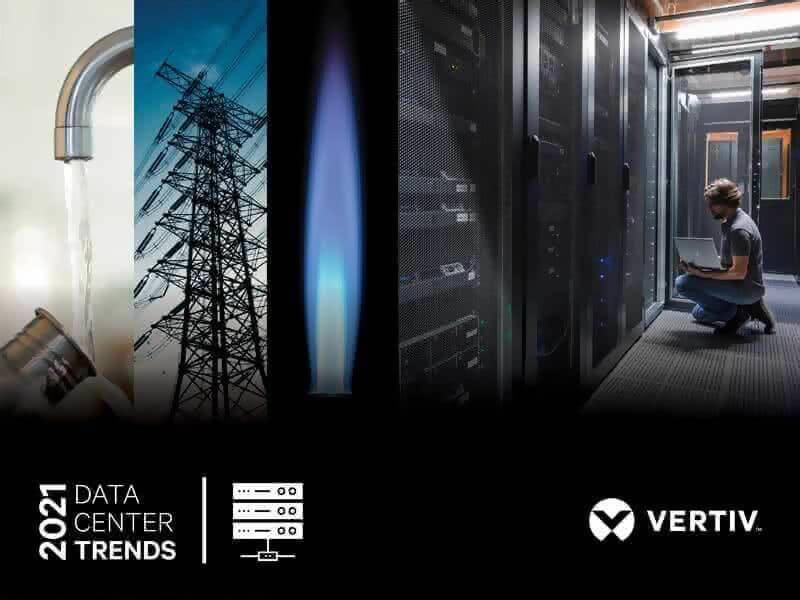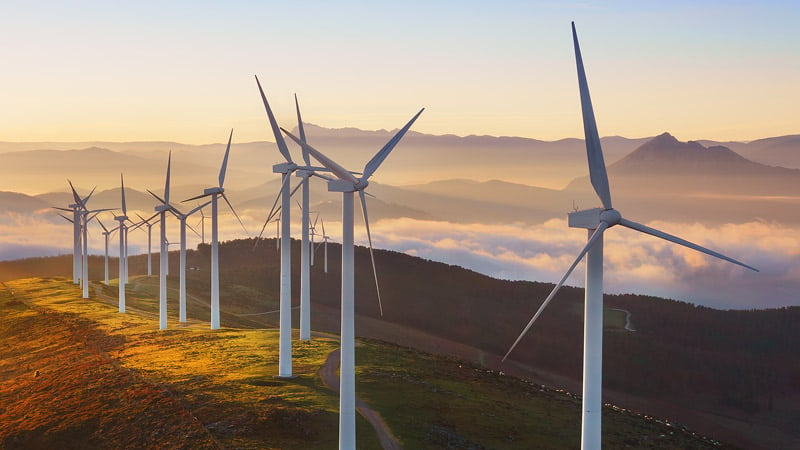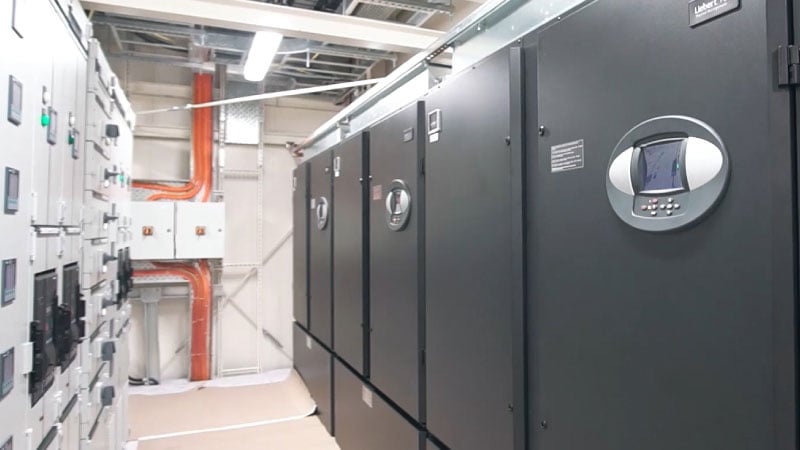Annually, Vertiv experts from around the world weigh in on trends that we see as being most impactful to the data center industry in the coming year. In 2023, we see the industry managing consumption and carbon footprint driving trends toward regulation, standardization, and the search for generator alternatives.
Data centers face increasing regulations
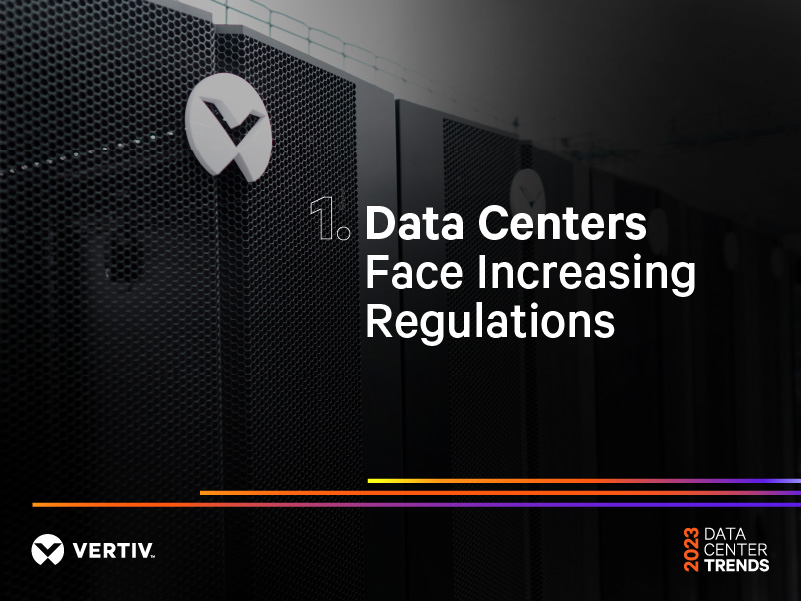
Mounting pressures to meet consumer demand for energy and water are forcing governments at all levels to take a harder look at data centers and their outsized consumption of those resources. Data centers are estimated to be responsible for up to 3% of global electricity consumption today and projected to touch 4% by 2030. The average hyperscale facility consumes 20-50MW annually – theoretically enough electricity to power up to 37,000 homes. Vertiv’s experts expect this to prompt increasing governmental scrutiny in 2023.
It’s happening in some places already. Dublin, Ireland, and Singapore have taken steps to control data center energy use, and massive data center water consumption – especially in areas prone to drought – is likely to trigger similar scrutiny. According to the U.S. Department of Energy, the water usage effectiveness (WUE) of an average data center using evaporative cooling systems is 1.8L per kWh. That type of data center can consume 3-5 million gallons of water per day – similar to the capacity used by a city of 30,000-50,000 people. The industry will continue to take steps to self-monitor and moderate – including an increasing preference for environmentally-friendly thermal designs – but 2023 will see increases in regulatory oversight.
Related Articles:
Environmental, Social and Corporate Governance
Hyperscalers and others shop off the rack
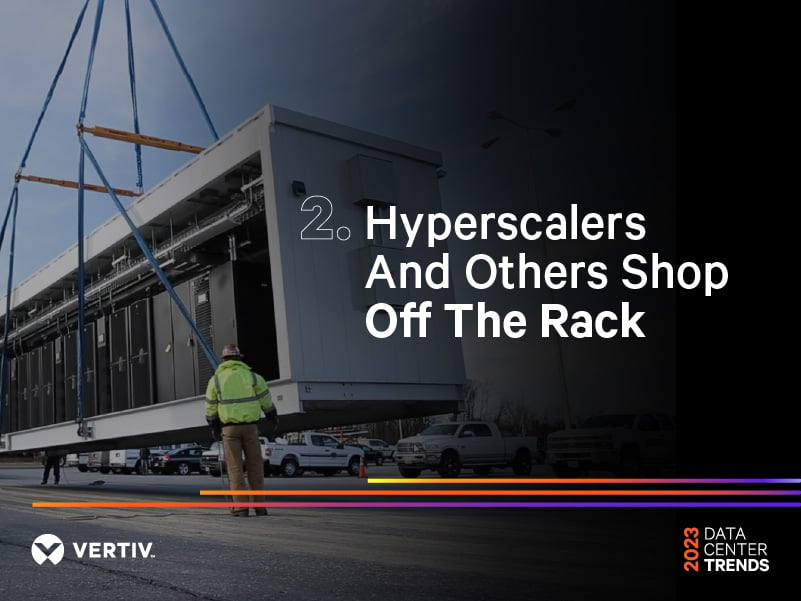
According to a recent Omdia survey, 99% of enterprise data center operators say prefabricated, modular data center designs will be a part of their future data center strategy. That’s more than a trend; it’s the new normal. In 2023, Vertiv’s experts anticipate a continuing shift in the same direction among hyperscalers as they seek the speed and efficiencies standardization delivers.
This is a newer concept for the world’s leading cloud providers, and they’re turning to colocation providers – who have been standardizing for years – to make it happen. Specifically, those cloud providers are outsourcing their new builds to colos to leverage their in-market expertise, proven repeatability, and speed of deployment. In short order, standardization – ranging from modular components, such as power and cooling modules and skids, to full-fledged prefabricated facilities – will become the default approach not just for the enterprise, but also hyperscale and the edge of the network.
Related Articles:
New Research Highlights Benefits of Prefabricated Modular Data Centers
Orange's Padus Lab to Showcase Next-Generation Prefab Solutions for Telecom Equipment Hosting
Diesel generators see real competition
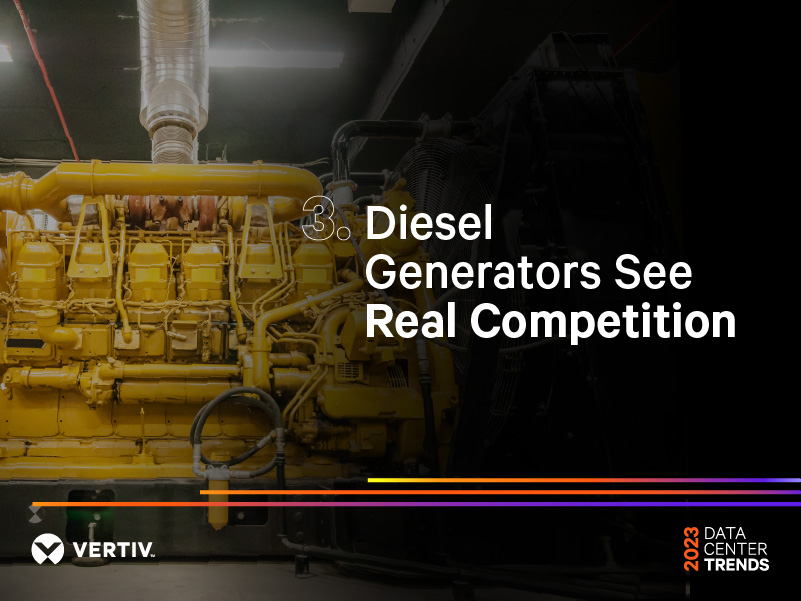
The diesel generator has long been an imperfect but inescapable piece of the data center ecosystem. It represents stored energy that largely goes unused while still requiring maintenance or fuel replacement after periods of inactivity. Then, when pressed into service, generators produce carbon emissions operators are desperately trying to avoid. Already, some organizations are relying on batteries for longer load support – up to five minutes in some cases – and even designing their data centers with minimal generator capacity.
These are transitional steps to minimize the role of the generator as the industry searches for other options – including new battery technologies – for extended backup power. In 2023, Vertiv’s experts anticipate a preferred alternative will emerge – specifically hydrogen fuel cells. These fuel cells will function much like a generator at first, providing momentary load support, and eventually hold promise for sustained or even continuous operation.
Related Articles:
How will the E2P2 hydrogen project enable Europe's climate neutral data center goals by 2030?
Evaluating the Potential of Fuel Cells for Data Center Power
Fuel Cells are Next for Data Centers
Higher densities alter thermal strategies
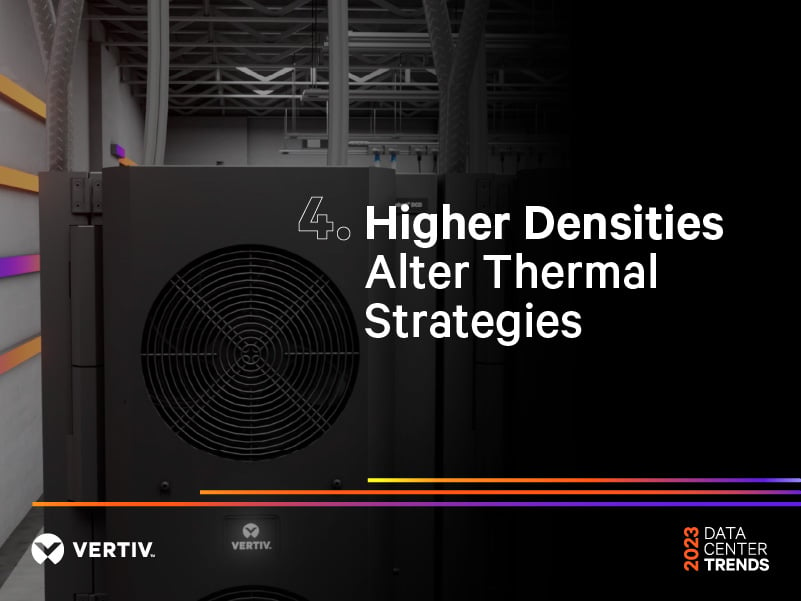
After years of relatively static rack densities, data center operators are increasingly requesting higher-density racks. According to the Uptime Institute’s 2022 Global Data Center Survey, more than a third of data center operators say their rack densities have rapidly increased in the past three years. This is especially true among larger enterprise and hyperscale data centers, where nearly half of those operating facilities at 10MW and above reported racks above 20kW and 20% claimed racks higher than 40kW.
This is consistent with the maturity of liquid-cooled server technologies and increasing acceptance and adoption of such technologies. The aforementioned increases in server power consumption are happening as the need to add capacity quickly is growing, challenging operators from all sides. This leaves them little choice but to explore the boundaries of existing facilities by adding computing in tight spaces, increasing rack densities, and creating thermal profiles that require liquid cooling. While liquid cooling is not a new technology, the early wave of successful, efficient, problem-free deployments in high-density environments has provided proof of concept that will boost adoption in the coming year. The addition of direct-to-chip cooling to new OCP and Open19 standards will only accelerate this trend.
Related Articles:
Updated Immersion Cooling Requirements from OCP Pave the Way for Increased Adoption
Data Center Knowledge Fast Chat: Vertiv’s Liquid Cooling Product Solutions
5G meets the metaverse at the edge
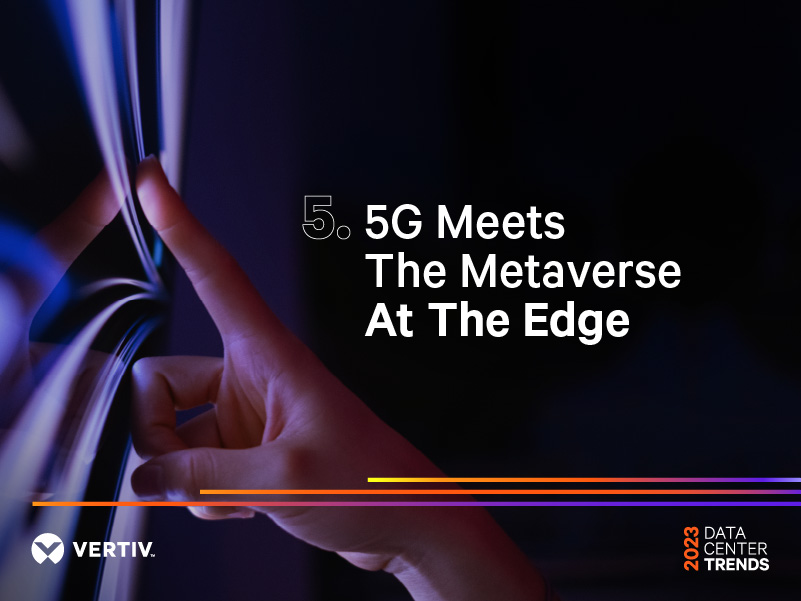
Omdia, in its 2022 Mobile Subscription and Revenue Forecast, projects nearly half of all mobile subscriptions – more than 5.8 billion – to be 5G by 2027, pushing computing closer and closer to the user. The metaverse is an application in search of an ultra-dense, low-latency computing network. In 2023, we’ll see these two activities intersect, with metaverse implementations leveraging 5G networks to enable the ultra-low latency features the application demands. Ultimately, this will require higher powered computing in those 5G edge locations, and we’ll see that happening soon – with early forays in 2023 followed by more widespread deployments in the years after. As the edge of the network becomes more sophisticated, so will the infrastructure needed to support it. This will include technologies such as artificial intelligence and virtual reality planning and management systems and increased adoption of lithium-ion UPS systems at the edge – an ongoing trend that saw share increase from 2% of sales in August 2021 to 8% in August 2022, according to IDC.
Related Articles:


